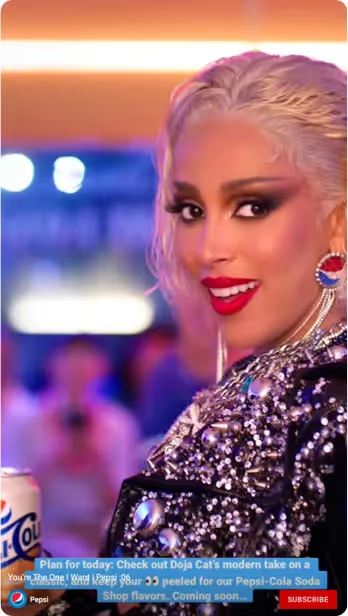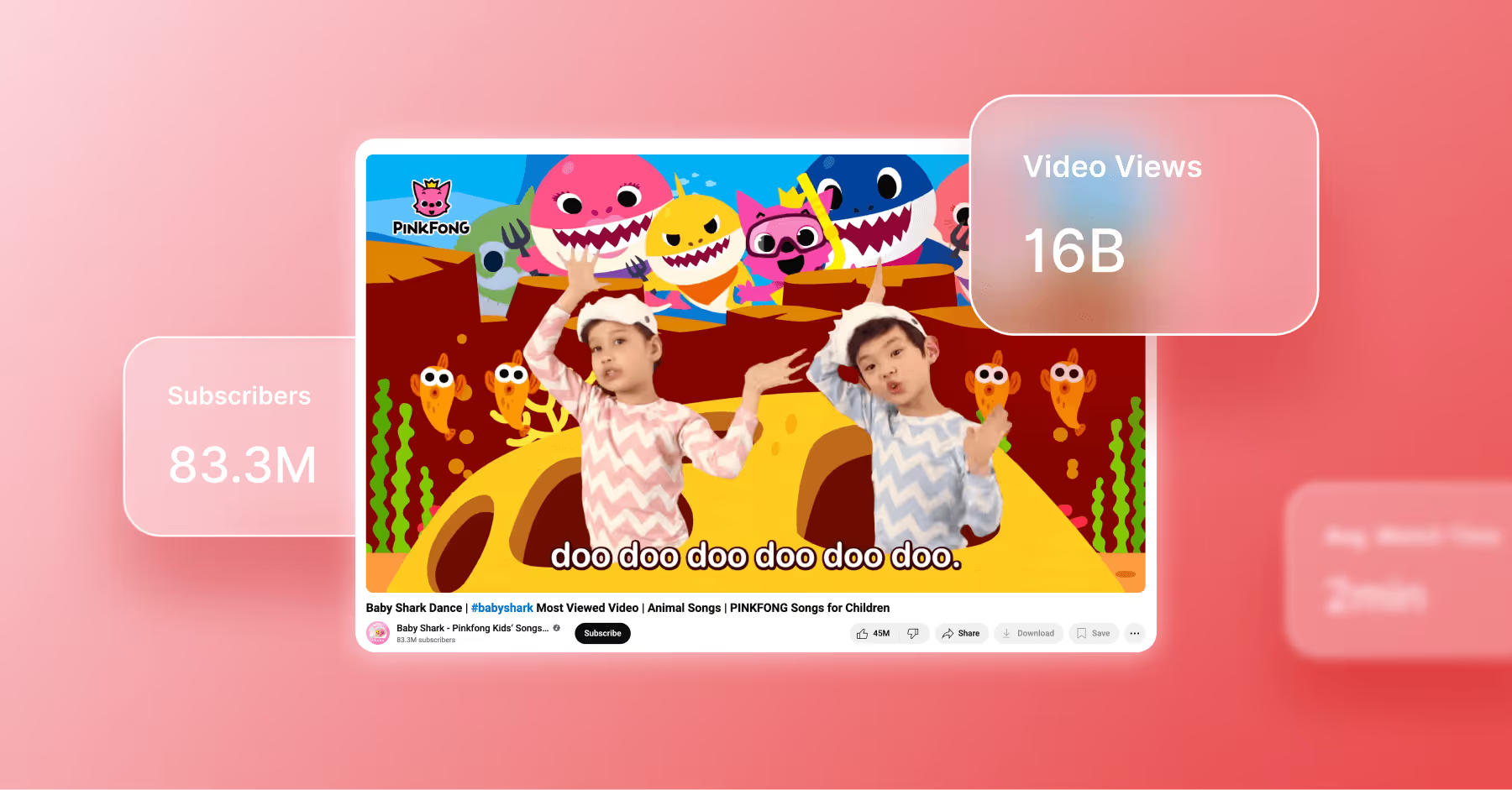Brand Tips for Successful YouTube Marketing Strategies
Practical strategies and tools to help brands thrive on YouTube in 2026.

YouTube has evolved from a video-sharing platform into one of the most powerful marketing channels for brands. With more than 2.5 billion active users worldwide, it’s a space where entertainment, search, and commerce collide. For marketers, YouTube offers a unique opportunity to combine long-form storytelling, short-form creativity with Shorts, and precise audience targeting through Google’s mature ad ecosystem. In this guide, we’ll break down why YouTube matters for brands, how to craft a winning strategy, and the tools you’ll need to grow your presence and stay competitive.
What Is YouTube Marketing?
YouTube marketing is the practice of using YouTube’s vast platform to promote your brand, products, or services through a mix of organic content, paid advertising, and creator partnerships. At its core, it’s about leveraging video, one of the most engaging formats online, to reach, educate, and inspire audiences.
Unlike traditional social media channels that focus heavily on text or imagery, YouTube is a video-first search and discovery engine. That means your content can serve two purposes:
- Entertainment and engagement: building relationships through authentic, shareable videos.
- Search visibility: tapping into YouTube’s role as the world’s second-largest search engine (behind Google).
A complete YouTube marketing strategy might include:
- Branded channels that host tutorials, product demos, case studies, or storytelling campaigns.
- YouTube Shorts to capture attention with short-form, TikTok-style videos.
- Influencer and creator collaborations to borrow trust and credibility from established voices.
- Paid campaigns using YouTube’s ad formats, powered by Google’s advanced targeting tools.
Done right, YouTube marketing helps brands boost awareness, drive traffic, generate leads, and build long-term loyalty. All while tapping into a platform where billions of people are actively seeking video content every month.
Why Is YouTube Marketing Important in 2026?
In 2026, YouTube is more than a video platform. It’s a cultural engine and one of the most influential spaces for consumer decision-making. With over 2.5 billion monthly active users, it remains the largest video-centric social channel and the second-largest search engine in the world.
Several shifts make YouTube especially critical for brands this year:
- Video dominates digital engagement
Consumers increasingly prefer video over static content, and YouTube’s long-form + short-form mix (via Shorts) captures both attention spans. - Social entertainment is a growth driver
Platforms are competing to be the home of “social entertainment.” YouTube’s creator ecosystem, fueled by Shorts and livestreaming, gives brands a unique way to connect through authentic, entertaining content. - Advertising sophistication
As part of Alphabet, YouTube offers one of the most mature ad and targeting infrastructures online. Brands can combine precise audience segmentation with performance metrics to maximize ROI. - Cross-platform SEO power
YouTube videos are increasingly appearing in Google search results. That means strong YouTube SEO not only boosts channel visibility but also enhances broader search strategies. - Cord-cutting and shifting media habits
With more consumers abandoning traditional TV, YouTube is becoming the go-to space for premium video consumption. For many users, it’s the primary place they encounter brand messaging.

How To Create a YouTube Strategy
You’re ready to invest in YouTube, that's great! Use this simple framework to build a strategy that actually moves the needle.
1. Set Clear Goals
Decide what success looks like and how YouTube supports it (brand lift, traffic, leads, sales, retention).
- Map goals → KPIs (e.g., views, watch time, CTR, subscriber growth, assisted conversions).
- Build a content calendar aligned to those goals. (Here's a link to our Social Media Content Calendar template to help get you started).
- Create a reporting cadence with a custom KPI dashboard so you can track, learn, and iterate.
2. Define Your Audience
Know exactly who you’re creating for.
- Go beyond demographics. Include professions, passions, pain points, and viewing habits.
- Create 2–3 lightweight personas to pressure-test topics, formats, and hooks.
3. Set Up (or Refresh) Your Channel
Now that your brand has defined its goals, reporting structure, and audience, it’s time to create a YouTube channel. Make your channel look legit and be discoverable from day one.
- Upload a recognizable profile image and on-brand banner.
- Write a clear handle and keyword-rich channel description.
- Add site links with UTM parameters to measure traffic and conversions.
- Optimize for search and best practices (playlists, featured video, channel keywords, consistent naming).
4. Choose Formats and Build a Publishing Cadence
Consistency beats perfection on YouTube.
- Decide which formats best fit your goals: long-form tutorials, Shorts, product explainers, creator collabs, livestreams.
- Publish on a predictable cadence (weekly, biweekly, or monthly) so your audience knows when to expect content.
- Balance evergreen videos (e.g., how-tos) with timely/reactive content (e.g., industry trends).
5. Measure, Learn, and Optimize
No two brands win on YouTube the same way, data is your compass.
- Track performance with YouTube Analytics + third-party tools for deeper insights.
- Measure KPIs across the funnel: awareness (views, impressions), engagement (watch time, likes, comments), and conversion (clicks, site traffic, sales).
- Double down on content that resonates, sunset formats that don’t, and continuously experiment with thumbnails, titles, and CTAs.
Tips for Marketing Your YouTube Channel
YouTube is dominated by content creators who manage their own personal brand. Marketing on YouTube as a corporation is different, however, there are many best practices that can be gleaned by observing what works best in creator marketing.
YouTube Formats
With the introduction of YouTube Shorts, there are now multiple formats that your brand can leverage as a part of your YouTube strategy. Additionally, you are also able to deliver in-feed posts to your users using your Community tab, which delivers an experience similar to more text and image-based social media channels. When it comes to users playing YouTube through the web vs app, your brand should be conscious of different preferences, and ensure that your content looks great on a monitor or a phone.
Social Entertainment
The defining trend behind all successful YouTube videos is social entertainment, which consists of content that is fun, relatable, authentic and inspires the user to engage. As entertainment is now a social experience, creating buzz-worthy video that people will want to share with others is the best way to grow your brand on the platform.
YouTube Keywords
YouTube and Google are both Alphabet companies, so their search systems share a lot of DNA. A strong YouTube SEO strategy (keywords in titles, descriptions, chapters, and tags, plus accurate captions and compelling thumbnails) boosts discoverability on-platform. Well-written metadata and topical keywords also help your videos surface in Google results, meaning smart YouTube keyword work can directly lift your broader SEO performance, not just your channel’s visibility.
Consistent Publishing Schedule
In order to grow on the platform to better promote on YouTube, you need to make a compelling case for why audiences should subscribe to your channel. The best way to do this is to have a schedule for publishing new content, which lets your audience know when to expect more videos. Don’t be afraid to ask your viewers to subscribe for more content, as a light reminder may be all they need to take action.
Iterating Content
There is no right way to market on YouTube, and it really comes down to figuring out what works for your brand, and doing more of that. Keeping a close watch on your YouTube analytics and using a comprehensive insights tool will help you optimize your creative strategy and increase your following.

Best YouTube Marketing Tools for Brands
Winning on YouTube means pairing great creative with smart optimization. With 2.5B+ users and fierce competition from brands and creators, you need tools that help you find your audience, earn clicks, and prove impact.
YouTube Studio
Native, first-party analytics for every channel.
Best for: day-to-day performance and retention insights.
- Dashboard of last 28 days + trends
- Deep dives: audience retention, CTR, traffic sources, subscribers
- Monetization overview (if enabled)
Quick tip: Watch Audience Retention and CTR. They’re core signals for YouTube recommendations.
Social Blade
Public, high-level stats across channels.
Best for: competitive scanning and growth benchmarking.
- Estimated views/subscribers over time
- Upload cadence and top-performing videos
- Side-by-side channel comparisons
Quick tip: Use it to spot format/cadence patterns, then test those on your channel.
Canva
Fast visuals for thumbnails and channel branding.
Best for: improving click-through with compelling thumbnails.
- Pre-sized YouTube thumbnail & banner templates
- Easy text, overlays, and effects for rapid A/Bs
- Brand kits to keep visuals consistent
Quick tip: Pair a clear promise (title text) with a face/expression on thumbnails to lift CTR.
Dash Social
All-up performance with competitive context.
Best for: connecting content to outcomes and planning next moves.
- KPI rollups from video → channel → portfolio
- Competitor and category benchmarks
- Easy reporting for stakeholders
Quick tip: Use YouTube benchmarks to set realistic targets and identify white-space formats to pursue next.
YouTube Marketing FAQs
What are the benefits of marketing on YouTube?
YouTube is the second-largest social marketing platform, and it has a well-established advertising infrastructure. With audience preferences gravitating further toward video content, there has never been a better time to start using YouTube as a marketing channel.
What is the main goal of YouTube marketing?
YouTube video marketing uses content to guide customers through the customer journey, whether it’s used for brand awareness, or sending users directly to e-commerce platforms.
How do I promote my YouTube video?
You are able to use YouTube’s ad management system to turn your video into a paid ad that plays before videos. If you wish to promote a video organically, your best option is to incorporate your YouTube videos in your content distribution processes on other social channels in order to drive your followers to your YouTube channel.
.avif)




